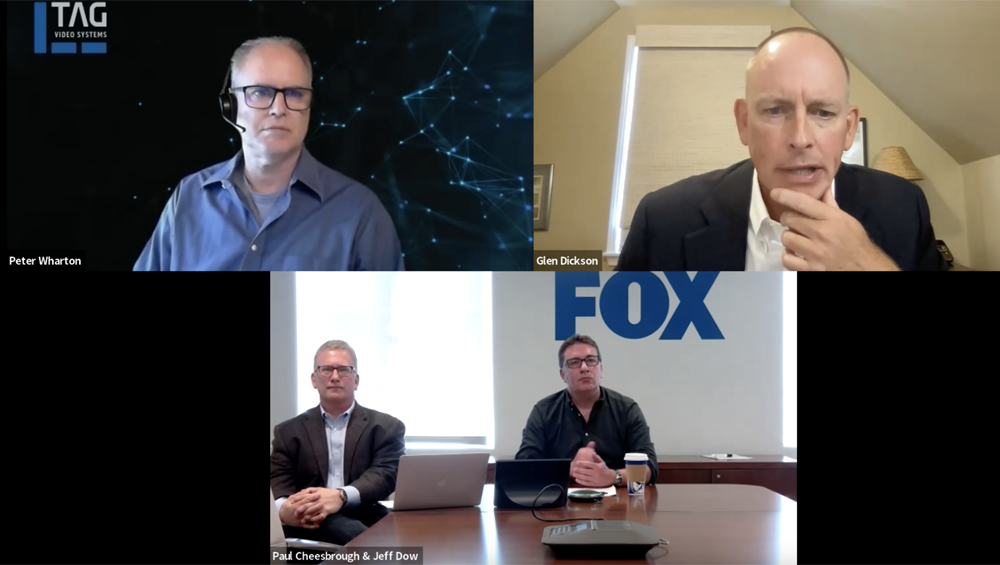
Fox Pulls Back Curtain On Its Major Tech Transformation

One of the largely untold stories behind the $71 billion Fox-Disney deal that closed in March 2019 is how Fox Corp. wound up using it to completely replace the underlying technology for all its remaining businesses, including its broadcast network, cable sports and news channels and various OTT services.
Last week the curtain was lifted on that technology reboot in the TVNewsCheck webinar “Accelerating Fox’s Tech Transformation: The Gryphon Project and Beyond,” moderated by this reporter, where top executives from Fox Corp. and technology vendor TAG Video Systems gathered to describe how Fox built a new cloud-centric architecture that feeds all of its broadcast and digital streams, managing and delivering hundreds of thousands of hours of programming to more than 200 Fox affiliated TV stations and more than 800 distribution partners across the country.
The Gryphon Project
Fox was already migrating to cloud-based technology back in 2017, when it began negotiating the sale of its film studio and cable entertainment networks to Disney. Like other big media companies, it was grappling with rapid growth in streaming as audiences migrated away from traditional linear TV channels along with the emergence of new formats like 4K, recalled Paul Cheesbrough, CTO & president of digital for Fox Corp.
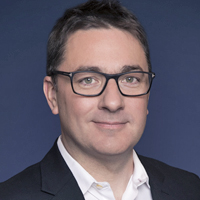
Paul Cheesbrough
“We were really trying to embrace the cloud as that kind of infrastructure to drive workflow change and workflow opportunity within both production and distribution,” he said.
When the discussions with Disney began, Fox’s technology team was fortunate to have a “very strong voice” at the negotiating table and a clear goal in mind, he said: to transfer as much of its legacy technology over to Disney as possible with the businesses it was selling, leaving behind “a blank sheet of paper” for Fox to start over with. So began “The Gryphon Project,” a two-year race to build a new cloud-native operations center in Tempe, Ariz., with backup facilities in both Los Angeles and the Amazon Web Services public cloud.
The key to Fox’s technology revamp was the Transitional Services Agreement (TSA) signed as part of the deal, in which for a period of two years Disney would continue to run existing on-premise operations at Fox’s former broadcast center on Pico Boulevard in Los Angeles and at The Woodlands facility outside of Houston, with Fox becoming a customer of those services. The Pico facility handled playout of the Fox network as well as its national sports and news networks, while The Woodlands was home to Fox’s regional sports networks (RSNs), eventually divested to Sinclair, as well as the backup facility for the Fox networks.
A Major Pivot
“It was the same technology, and the same people were operating those services, they were just owned and overseen by Disney,” Cheesbrough explained. “That freed up my team to fully focus on building out the new infrastructure with no distractions on how they were running the previous infrastructure. And that, put simply, was the opportunity that we saw as being once in a lifetime — to use this transaction to really kickstart that kind of major pivot, a major transformation for the technology organization.”
That transformation dovetailed with a larger change across Fox, as the deal shifted Fox’s focus away from producing movies and TV shows to more live production and live distribution, particularly live sports. But the technology opportunity that Fox seized with the TSA was not without risks, particularly since Fox was broadcasting the Super Bowl in February 2020.
“We absolutely had to be brave,” Cheesbrough said. “We transferred everything from our finance systems to our broadcast operations. We did that in a year.”
Fox wanted to reduce its footprint in Los Angeles, given expensive real estate costs and concerns over power and earthquakes, and it also needed to replace The Woodlands facility that Disney now owned and was revamping to be its new technical hub (the RSNs, since rebranded as Bally Sports, now originate out of a new facility Sinclair built with Encompass in Atlanta). After mulling several possibilities including Denver, Fox chose Phoenix suburb Tempe as the site for its new content hub, with a location on Arizona State University’s technology campus, while creating a downsized backup facility in Los Angeles and repurposing some space there for live production.
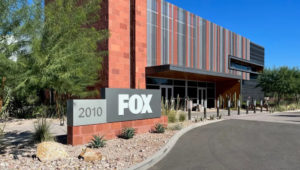 Finding The Right Talent
Finding The Right Talent
“We were looking at it primarily from a talent lens point of view — do the skills exist, and how competitive is the market for those skills,” Cheesbrough said. “We were transitioning to much more software-centric skills and moving away from hardware-centric skills, and we needed people who were very operational but really understood a combination of IT and broadcast, not just one or the other.”
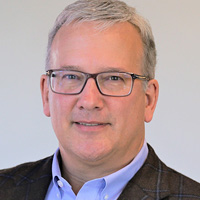
Jeff Dow
Fox wound up basically halving the 500-employee technical staff it had prior to the transaction, transferring around 40 people and hiring 200 new employees in Tempe. Many of the new hires came from ASU’s Fulton School of Engineering and its Cronkite School of Journalism, said Jeff Dow, Fox Corp. EVP, media and broadcast operations. Fox created an internal training program to bring the recent graduates up to speed, pairing them with broadcast veterans that Fox brought over from its legacy operations, such as a master control operator with 20 years of NFL experience and a cloud engineer who worked in Fox’s old international TV distribution business.
“We’ll start them out on the lower end cable channels like Fox Soccer, and let them cut their teeth on that, get experience and gain confidence, and then move them up to FS1 and FS2 primetime,” Dow said. “Then it’s great to see, after a year, one of these grads handling an NFL game on their own.”
Fox has a new internship program this fall with ASU under which college seniors from the engineering and journalism school will work on the production teams for the “1st & Ten” virtual graphic used in Fox’s NFL and college football coverage.
“What an exciting thing, because that gives these young men and women the opportunity to do actual real production work on a Big Ten game or an NFL game,” Dow said. “That further provides us the opportunity when they graduate four or five months after the end of the NFL season to hire them.”
‘Triangle Of Resilience’
Fox’s major partner on the technology side is AWS, which brought 30 engineers to the project as Fox built its content hub to ensure that Fox could seamlessly operate between on-prem hardware and cloud-based infrastructure in both Tempe and Los Angeles with full backup capability within the AWS cloud, creating what Cheesbrough calls a “triangle of resilience.” AWS also helped Fox tackle some big technical challenges, such as handling uncompressed video and supporting statistical multiplexing in the cloud.
All of Fox’s “media services” functions for linear distribution, streaming, AVOD or VOD distribution — including content acquisition, encoding, transcoding, editing, closed captioning, archival, storage and distribution down to Tempe prior to playout—are done today through the AWS cloud.
“When you look at resiliency it’s spread across multiple availability zones, US-East-2 and US-West-2,” Dow said. “It supports our entire operation from playout of an NFL game — to make sure we have all of the content prep that we need to do that — to our AVOD distribution to Tubi, to all of our other partners. It’s all in a complete AWS ecosystem.”
While several major networks like Discovery have run playout from the AWS public cloud for years with high-bandwidth contribution links, Fox’s relationship with AWS goes one step further. Part of the AWS backbone actually runs through Tempe, and Fox’s IP network connects directly into four AWS transit centers across the country.
“It’s almost worth looking at Tempe as … a region within AWS, it’s that connected to them,” Cheesbrough said.
Winnowing Down Partners
The net result is a fully IP, SMPTE 2110-compliant plant in Tempe that relies on less than one-quarter the number of vendors compared to Fox’s previous operations — perhaps seven or eight key vendors compared to the 30-odd vendors in the legacy operations, Dow said. And Fox has vastly improved disaster recovery capabilities, with the ability to run its entire operation out of Tempe or Los Angeles, as well as the flexibility to share workloads between the two sites during busy sports weekends.
Key suppliers for Fox’s new architecture include Evertz, with its Mediator automation and control software; Mediakind, with its encoding technology and integrated receiver/decoders (IRDs) that are used across Fox affiliates and MVPDs for both satellite and terrestrial distribution; and TAG, which provides monitoring software for all of Fox’s program streams including both traditional linear distribution and OTT.
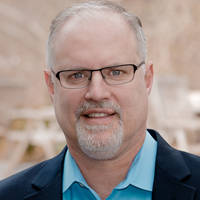
Peter Wharton
TAG’s software is already used in a number of large multichannel playout facilities, said Peter Wharton, chief strategy and cloud officer, TAG Video Systems. But what Fox has done in Tempe that is unique, Wharton said, is to create a “cloud center of excellence” that helps the company accelerate deployment, build best practices and leverage these technology gains across the entire enterprise, a strategy that he sees as being essential as more big broadcasters move to the cloud.
Eliminating Silos
With The Gryphon Project, Fox has also eliminated the divisions that have traditionally existed in large media companies between live production, playout, broadcast and digital, with each separate unit picking its own best technologies and workflows, Wharton said. Those “silos” make it hard to streamline workflows across different parts of the business and quickly launch new services, which is the key benefit of the public cloud going forward.
“What Fox has really done is break down these silos,” Wharton said. “For example, they’re using us not only for the playout in Tempe but also for World Cup and Super Bowl for ultra-low latency to do live production. And the exact same software that’s monitoring the playout and doing the World Cup and Super Bowl is also doing the OTT monitoring for both Tempe and Los Angeles, including ad monitoring.
“They’re able to leverage the same technology across their entire workflow and break down these silos that had previously been the norm,” he said. “So that gives them flexibility and agility to launch new services and adapt to the future.”
































Comments (0)